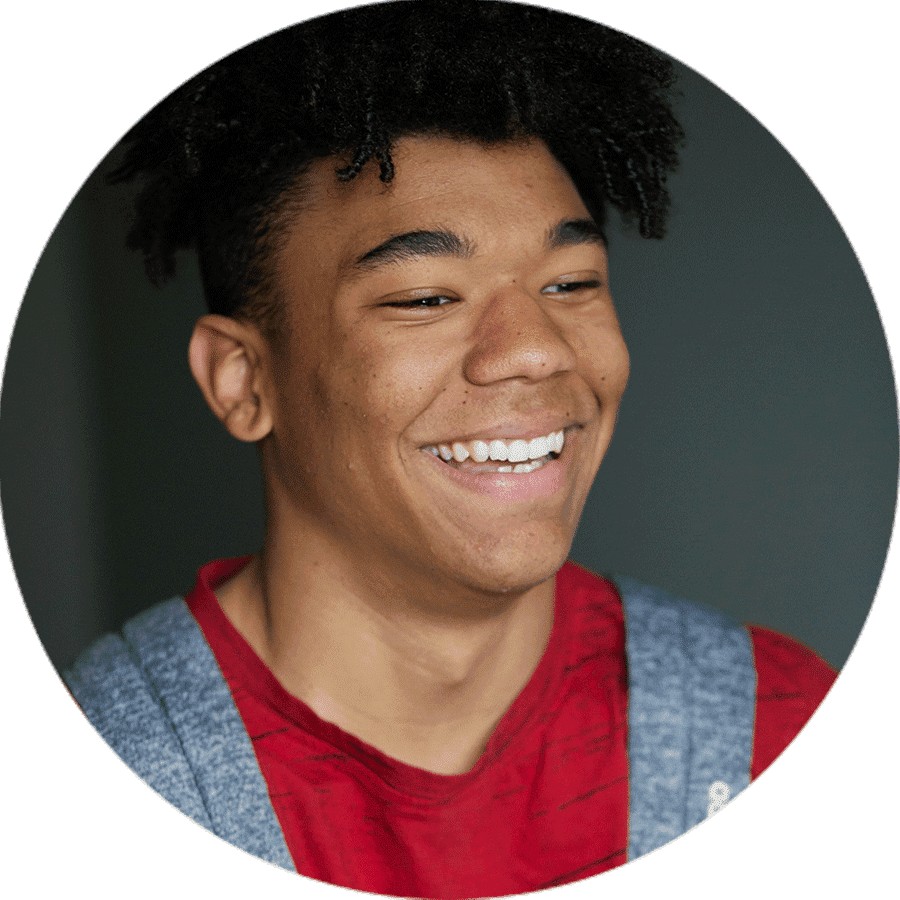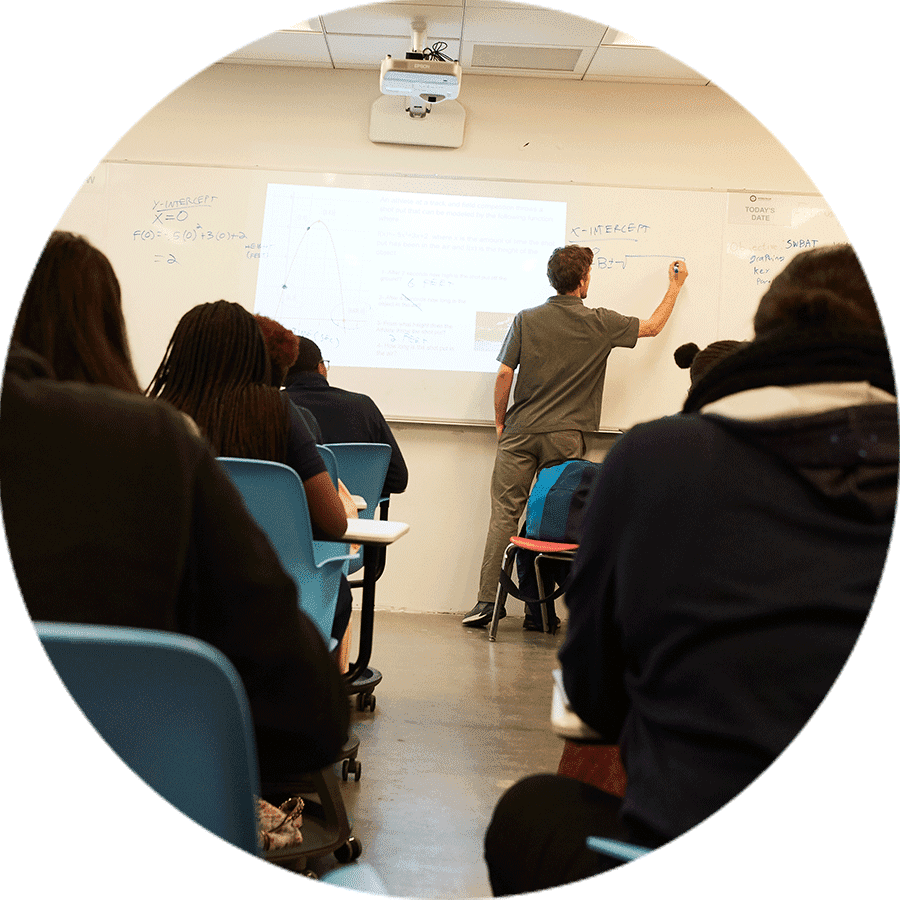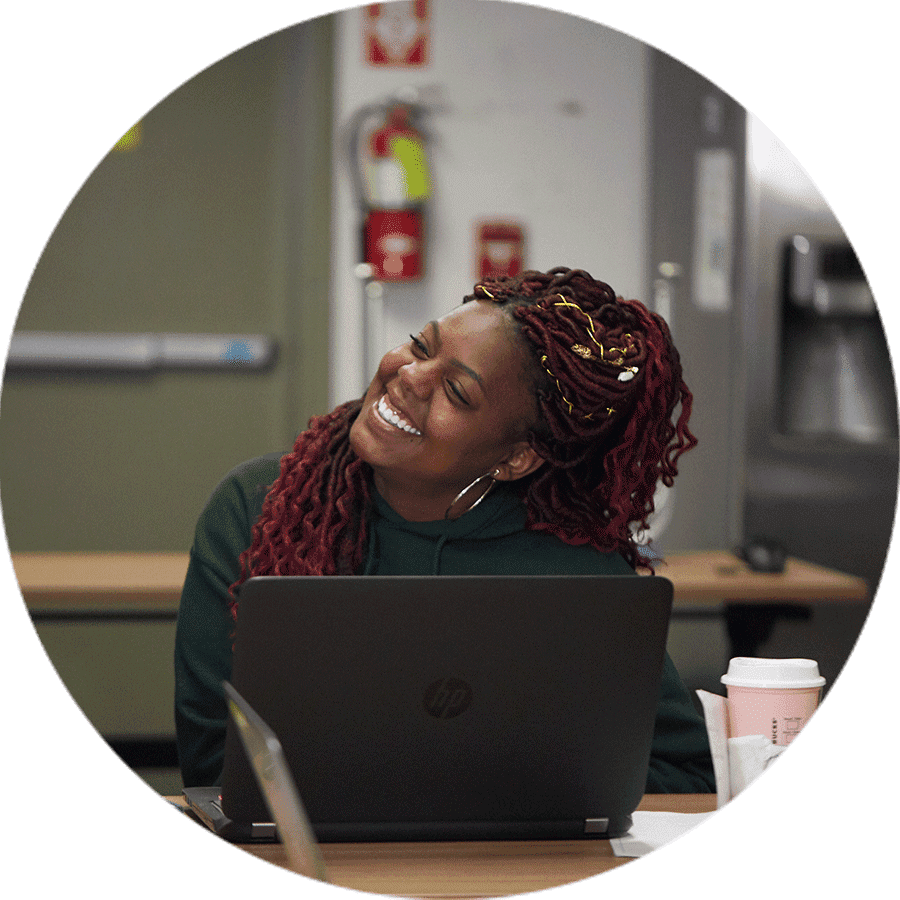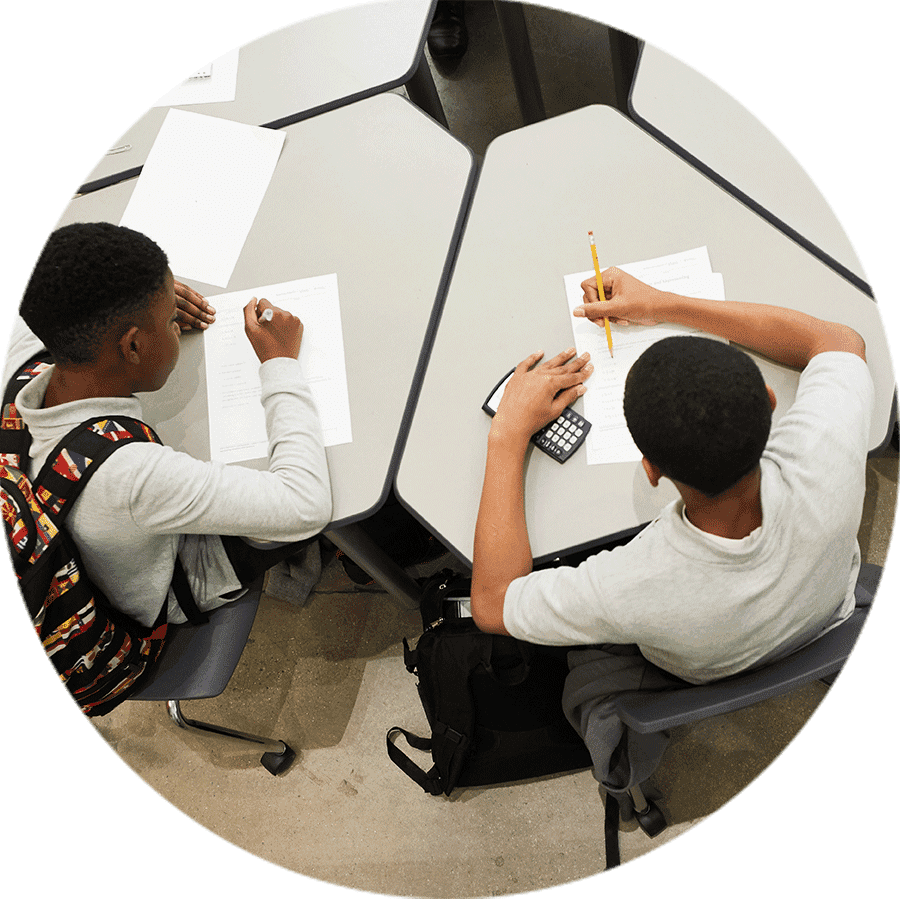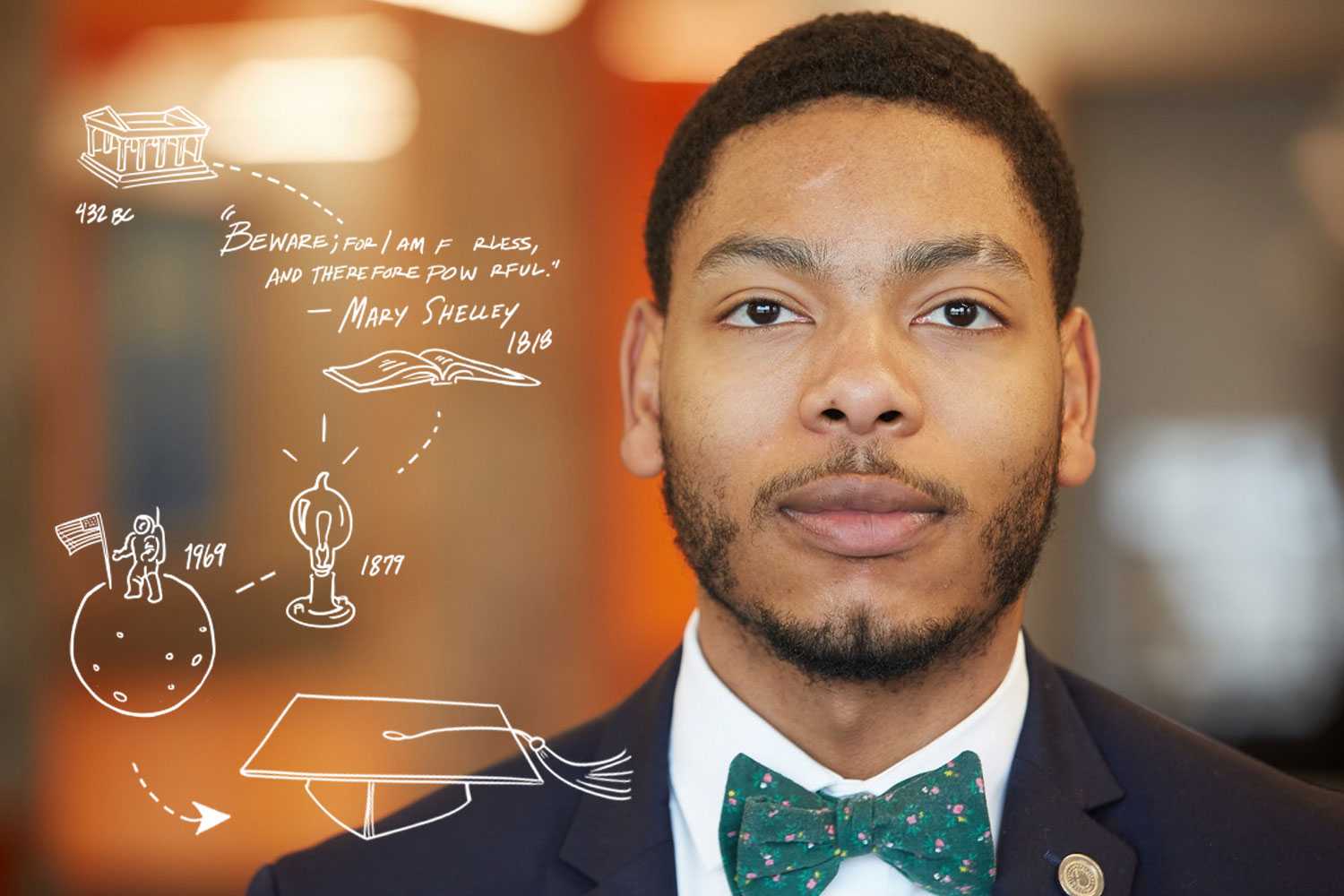2. Students learn best when teaching is personalized and connected to their culture and community.
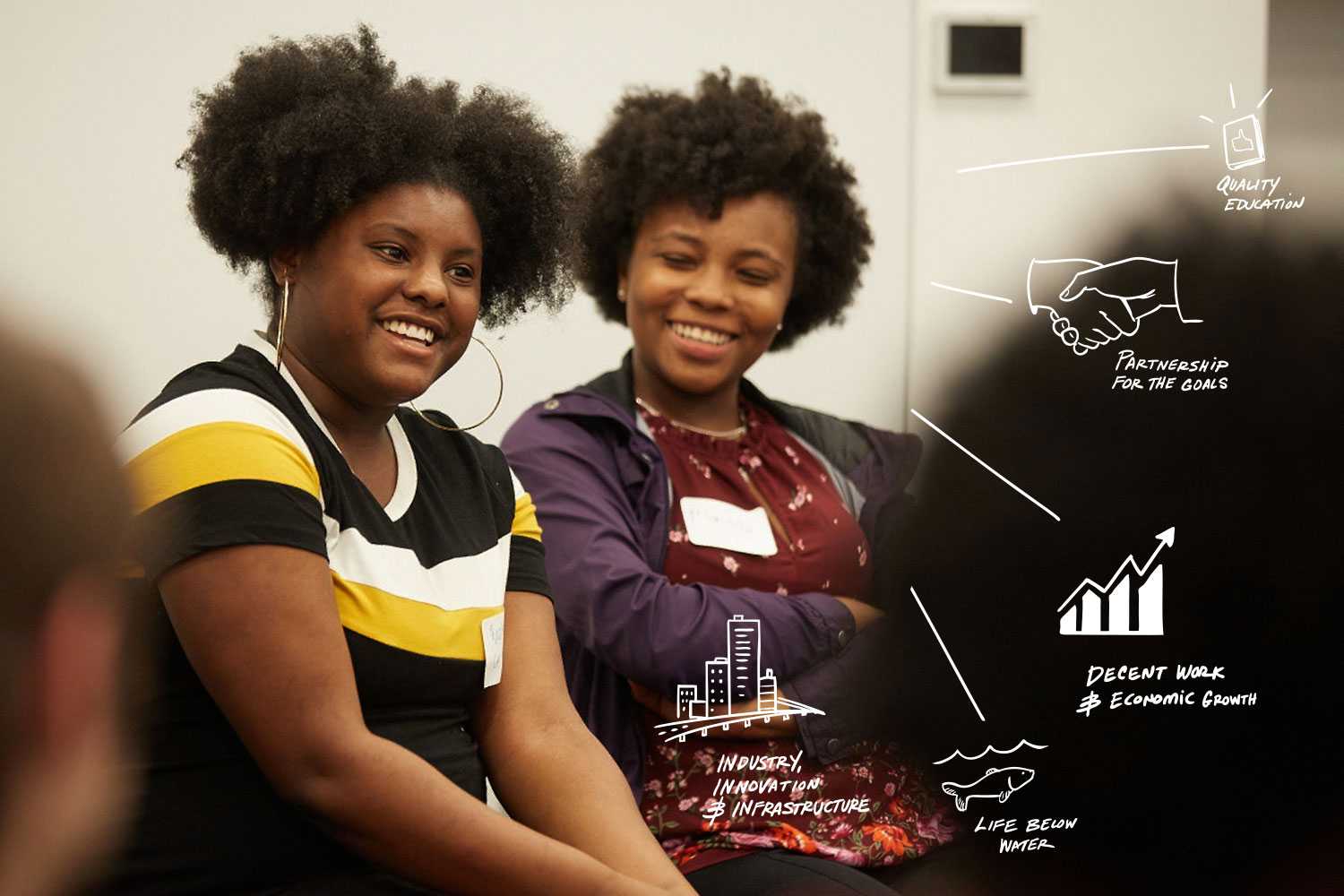
Student-centered learning is deep learning.
Fact:
Personalized, student-centered approaches can have a positive impact on learning.
Source: RAND Corporation
Student-centered learning means guiding students toward mastery by customizing instruction in response to students’ individual strengths, needs, and interests. Every high school student brings individual assets to their learning, along with challenges from prior experiences.
Student-centered learning requires deep and respectful relationships between students and teachers—and, in many cases, parents and other family members. The role of the teacher shifts from disseminator of information to facilitator or coach, as teachers guide students to take ownership of their own learning journeys.
For students, student-centered learning usually means more choice about when and where to learn, more projects and authentic tasks, and more collaborative work with peers. A student-centered framework also accommodates learning in real-world settings—through work experiences, internships, community projects, and service learning.
Why Deeper Learning Matters
Author and researcher Monica Martinez explains that deeper learning builds students’ competencies toward six essential outcomes:
- Mastery of academic content
- Critical thinking
- Effective communication
- Collaboration
- Self-directed learning, or learning to learn
- Academic mindset
Dive Deep
![a student smiling]() Students at the Center
Students at the CenterDive into Jobs for the Future’s resource collection, which includes a wide range of materials on the four tenets of student-centered learning.
Explore![a teacher writing on a white board]() What’s Possible
What’s PossibleNational experts describe why personalized learning matters and what it looks like, in an overview for educators, families, and community members.
Read![a student smiling]() Sustaining Personalization
Sustaining PersonalizationHow did Summit Public Schools maintain their commitment to personalized pathways for students during school closures? Explore their real-time response in this report.
Read More![students studying]() Equity in the Classroom
Equity in the ClassroomHere’s advice for teachers, leaders, and school designers on creating culturally responsive classrooms.
Read
Analyze
Student-centered learning means more choices for students about when, where, and how they learn.
Step 1 – Research
Consider the learning experiences your team just developed through the lenses of personalization and equity. How will you build in choices for students, while also ensuring rigor and depth? How will you maximize learning for all students, including those with special needs, English learners, and students who are behind when they enter high school?
Step 2 – Reflect
Share findings with your team and discuss these questions:
-
In each learning experience, where do you see opportunities for students to exercise meaningful choice and agency?
-
How can you personalize the experience and ensure that all students are able to make the most of it?
-
What lessons do you see, and how can you translate them into your school design?
